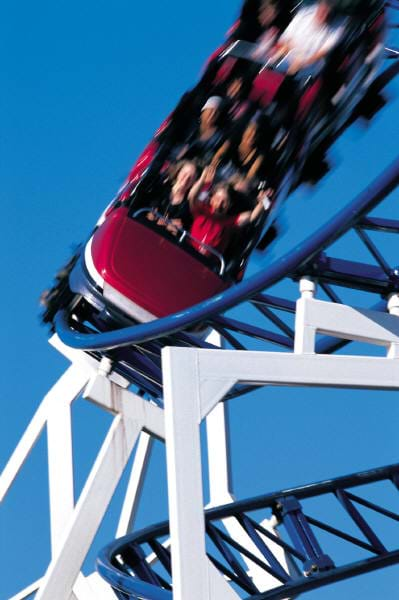
Summary
Keep it moving! This unit introduces potential and kinetic energy as forms of mechanical energy in the context of motion. A series of hands-on activities enable students to explore the relationship between potential and kinetic energy and the concept of conservation of energy. The concepts of momentum, collisions, and frictional forces are also viewed through the lens of motion.Engineering Connection
Mechanical engineers are concerned about the mechanics of energy — how it is generated, stored, and moved. For example, mechanical and civil engineers ensure that there is sufficient potential energy, which is converted to kinetic energy, to move cars along an entire roller coaster ride. To increase vehicle safety, engineers take into account energy of motion concepts when designing airbags to better protect passengers from the impact of collisions.
Subscribe
Get the inside scoop on all things TeachEngineering such as new site features, curriculum updates, video releases, and more by signing up for our newsletter!Unit Schedule
Suggested activity order:
More Curriculum Like This

Students are introduced to both potential energy and kinetic energy as forms of mechanical energy. A hands-on activity demonstrates how potential energy can change into kinetic energy by swinging a pendulum, illustrating the concept of conservation of energy.

Students explore the physics exploited by engineers in designing today's roller coasters, including potential and kinetic energy, friction and gravity. During the associated activity, students design, build and analyze model roller coasters they make using foam tubing and marbles (as the cars).

This lesson introduces the concepts of momentum, elastic and inelastic collisions. Many sports and games, such as baseball and ping-pong, illustrate the ideas of momentum and collisions. Students explore these concepts by bouncing assorted balls on different surfaces and calculating the momentum for...

On the topic of energy related to motion, this summary lesson ties together the concepts introduced in the previous four lessons and show how the concepts are interconnected in everyday applications. A hands-on activity demonstrates this idea and reinforces students' math skills in calculating energ...
Copyright
© 2020 by Regents of the University of ColoradoLast modified: January 20, 2021







User Comments & Tips